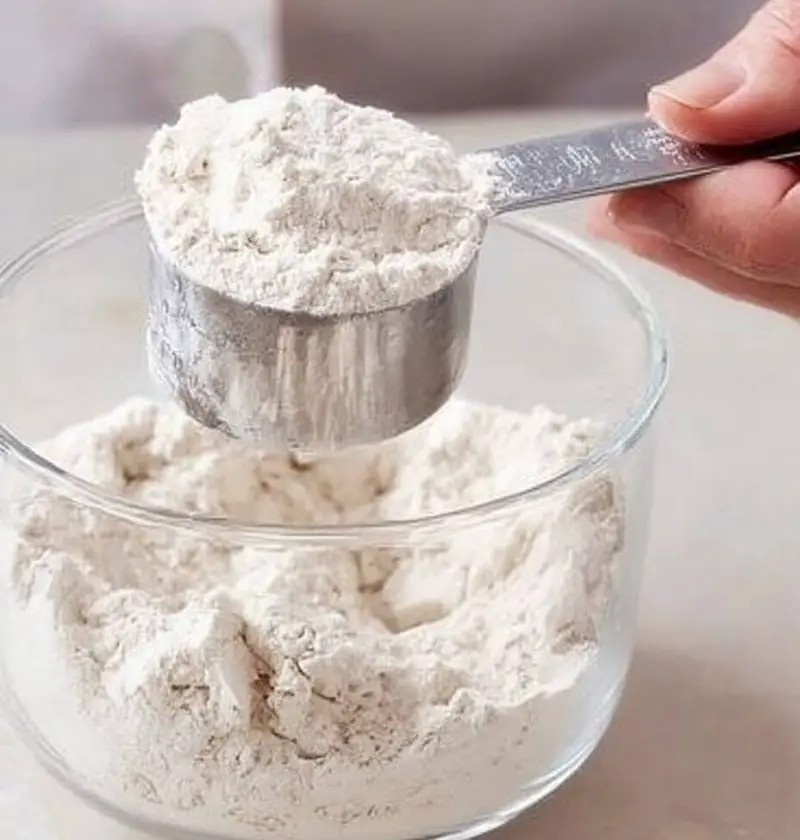Save This Recipe
Alright, let’s talk about something that drives me up a wall: baking a beautiful batch of muffins or cookies, only to pull them out of the oven and think, Well, that’s… disappointing. You know what I mean? They look fine, but they taste heavy, like you mixed in a handful of cement.
I used to blame the recipe. Or the weather. Or maybe the oven was having a mood. But turns out, the culprit was sitting in plain sight—my measuring cup. Yep. The way I measured my flour was ruining everything.
Let me tell you what I learned, and how it turned my cookies from “meh” to “mmm.”
Scoop It Wrong, Bake It Bad
So here’s the mistake a lot of us make—and trust me, I’ve done it for years. You grab your measuring cup, scoop it right into the flour bag, give it a little shake to level it off, and toss it in the bowl. Easy, right?
Wrong.
When you scoop flour straight from the bag like that, you’re packing it in. The flour gets all tight and compact, and just like that, you’ve accidentally added an extra 20 to 30 grams. Doesn’t sound like a lot, but in baking? That’s enough to turn your soft cookies into edible paperweights.
I saw this TikTok from a lovely gal called @sweetandsavorybyshinee (go find her, she’s a gem). She literally showed how much extra flour ends up in the cup when you scoop vs. spoon. It was shocking. And a little embarrassing.
The Spoon Trick That Changed Everything
So what should you be doing instead? Grab a spoon. Yep, just a regular old spoon from your drawer.
Here’s how it goes:
-
Grab your dry measuring cup.
-
Use the spoon to gently sprinkle flour into the cup. Don’t press it down, don’t shake it.
-
Let it mound a bit on top.
-
Then take a butter knife (or the back of the spoon if you’re lazy like me) and level it off.
That’s it. That’s the whole trick.
What you’re doing here is giving the flour some breathing room. You’re letting it settle naturally instead of forcing it into the cup like you’re stuffing a suitcase five minutes before vacation.
But Does It Really Matter That Much?
Listen—I’m not a food scientist. I’m a woman who’s made enough banana bread to know when something ain’t right. And when I started spooning my flour instead of scooping it? The difference was night and day.
My pancakes got fluffier. My cookies had that soft, bendy-in-the-middle magic. My cakes didn’t feel like punishment. Even my picky niece said, “These don’t taste like the ones you made last time,” which—let’s be honest—was kind of the goal.
It’s not about being perfect. It’s about giving your baked goods a fighting chance.
If You’re a Bit of a Nerd (Like Me)
Now, if you really want to get nerdy about it, use a kitchen scale. A properly spooned cup of all-purpose flour weighs about 120 grams. You can weigh it out instead of measuring by volume, and then you’ll know you’re dead-on accurate.
But honestly? The spoon method gets you close enough. Unless you’re making croissants or trying to impress Paul Hollywood, you don’t need to stress.
Final Thoughts—From My Oven to Yours
Look. Baking is already enough of a gamble—humidity, oven hot spots, distractions like phone calls or the dog wanting out again. Don’t let something as simple as measuring flour be the reason your cookies don’t get eaten.
The next time you bake, try the spoon trick. It might feel a little fussy at first, but once you taste the difference, you’ll be like, “Ohhh, that’s what it was!”
And if you’ve got kids or grandkids helping out in the kitchen? Teach ’em this trick early. Let them know that sometimes the tiniest details make the biggest difference.
And that, my friend, is how you keep cookies from being sad. Now go preheat that oven—and save me one, would ya?
To watch the full reel, click the link here.

